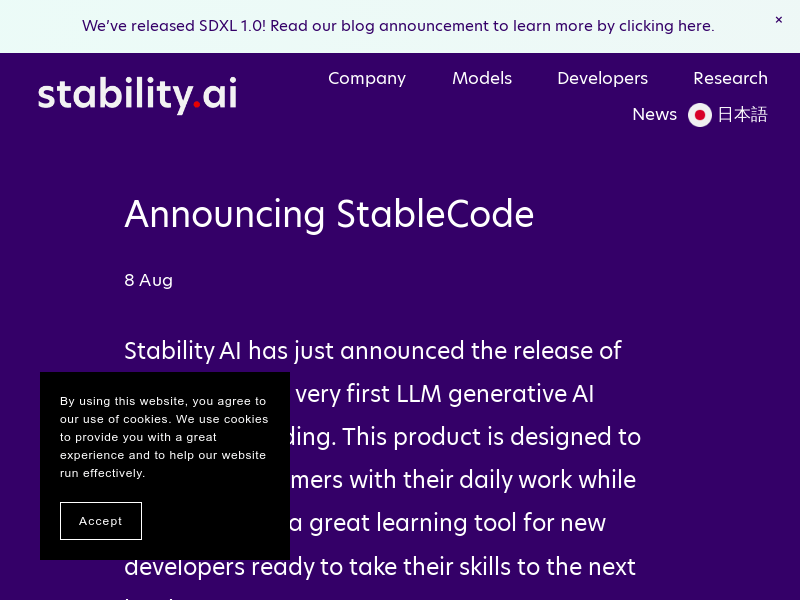Meta-Prompting
Meta-hint technology to improve language model performance

Product Details
Meta-Prompting is an effective scaffolding technique designed to enhance the functionality of language models (LM). This method transforms a single LM into a multi-faceted commander, adept at managing and integrating multiple independent LM queries. By using high-level instructions, meta-cues guide LM to decompose complex tasks into smaller, more manageable subtasks. These subtasks are then handled by different "expert" instances of the same LM, each operating according to specific customized instructions. At the heart of this process is the LM itself, which, as the conductor, ensures seamless communication and effective integration between the outputs of these expert models. It also leverages its inherent critical thinking and robust validation processes to refine and validate the final results. This collaborative prompting approach enables a single LM to simultaneously act as a comprehensive commander and a diverse team of experts, significantly improving its performance in a variety of tasks. The zero-shot, task-agnostic nature of meta-cues greatly simplifies user interaction, eliminating the need for detailed task-specific instructions. Furthermore, our research shows that external tools, such as the Python interpreter, can be seamlessly integrated with the meta-hint framework, thereby broadening its applicability and utility. Through rigorous experiments with GPT-4, we demonstrate that meta-cueing outperforms traditional scaffolding methods: averaged across all tasks, including the 24-point game, One Move General, and Python programming puzzles, meta-cueing using the Python interpreter feature outperforms standard prompts by 17.1%, is 17.3% better than expert (dynamic) prompts, and is 15.2% better than multi-personality prompts.
Main Features
Target Users
Used to improve the performance of language models in a variety of tasks without the need for detailed task-specific instructions
Examples
Used to improve the performance of GPT-4 in various tasks
Used to simplify user interaction with language models
Used to integrate external tools (such as Python interpreter) to improve the applicability of LM
Quick Access
Visit Website →Categories
Related Recommendations
Discover more similar quality AI tools

IBM Watson Studio
IBM Watson Studio is a collaborative platform that enables data scientists, developers and analysts to build, train and deploy machine learning models. It supports a variety of data sources, enabling teams to streamline their workflows. With advanced features such as automated machine learning and model monitoring, Watson Studio users can manage their models throughout the development and deployment lifecycle.

Amazon SageMaker
Amazon SageMaker is a fully managed machine learning service that helps developers and data scientists quickly and cost-effectively build, train, and deploy high-quality machine learning models. It provides a complete development environment, including visual interface, Jupyter notebook, automatic machine learning, model training and deployment and other functions. Users can build end-to-end machine learning solutions through SageMaker without managing any infrastructure.

StableCode
StableCode is the first programming-oriented generative AI product released by Stable AI. It uses three different models to help developers improve programming efficiency. The base model was first trained on BigCode’s stack-dataset (v1.2) and further trained on popular programming languages such as Python, Go, Java, Javascript, C, markdown, and C++. In total, we trained on 560B code tokens on a high-performance computing cluster. Subsequently, by tuning the basic model, approximately 120,000 code instruction/response pairs were trained to solve complex programming tasks. StableCode is an ideal building block for learning programming, and the long text environment window model provides users with single-line and multi-line autocomplete suggestions. The model can process more code at once (2-4x more code than previously released open source models, with a context window of 16,000 tokens), enabling users to view or edit the equivalent of five average-sized Python files simultaneously, making it an ideal learning tool for beginners to take on larger challenges.

AWS HealthScribe
AWS HealthScribe is a HIPAA-compliant service that helps healthcare software vendors build clinical applications by analyzing patient-clinician conversations to automatically generate clinical notes. Features: - Enhance clinical productivity with AI-generated notes that are easier to reference, edit and complete. - Use AI responsibly in clinical settings, providing traceable transcript references for every AI-generated note. - Unified, integrated conversational and generative AI services across applications to simplify implementation. - Protect patient privacy with HIPAA-compliant services for telemedicine and in-clinic consultations. Pricing: Pay as you go, no upfront fees. Usage scenarios: - Reduce documentation writing time - Improve the work efficiency of medical recordkeepers - Provide patient-friendly consultation summary Tags: clinical notes, artificial intelligence, medical software

Intel AI
Intel AI and Deep Learning Solutions are a series of downloadable AI reference kits launched by Intel in partnership with Accenture to help enterprises accelerate their digital transformation journey. These kits are built on the AI application tools Intel provides to data scientists and developers, and each kit includes model code, training data, instructions for machine learning pipelines, libraries, and Intel oneAPI components.

Radal
Radal is a no-code platform that fine-tunes small language models using your own data, for startups, researchers, and enterprises that need custom AI without the complexity of MLOps. Its main advantage is that it enables users to quickly train and deploy custom language models, lowering the technical threshold and saving time and costs.

Gitee AI
Gitee AI brings together the latest and hottest AI models, provides one-stop services for model experience, inference, training, deployment and application, provides abundant computing power, and is positioned as the best AI community in China.

MouSi
MouSi is a multi-modal visual language model designed to address current challenges faced by large-scale visual language models (VLMs). It uses integrated expert technology to collaborate the capabilities of individual visual encoders, including image-text matching, OCR, image segmentation, etc. This model introduces a fusion network to uniformly process outputs from different vision experts and bridge the gap between image encoders and pre-trained LLMs. In addition, MouSi also explored different position encoding schemes to effectively solve the problems of position encoding waste and length limitation. Experimental results show that VLMs with multiple experts exhibit superior performance than isolated visual encoders, and obtain significant performance improvements as more experts are integrated.

OpenAI Embedding Models
OpenAI Embedding Models is a series of new embedding models, including two new embedding models and updated GPT-4 Turbo preview models, GPT-3.5 Turbo models, and text content review models. By default, data sent to the OpenAI API is not used to train or improve OpenAI models. New embedding models with lower pricing include the smaller, more efficient text-embedding-3-small model and the larger, more powerful text-embedding-3-large model. An embedding is a sequence of numbers that represents a concept in something like natural language or code. Embeddings make it easier for machine learning models and other algorithms to understand the relationships between content and perform tasks such as clustering or retrieval. They provide support for knowledge retrieval in the ChatGPT and Assistants APIs, as well as many retrieval augmentation generation (RAG) development tools. text-embedding-3-small is a new efficient embedding model. Compared with its predecessor text-embedding-ada-002 model, it has stronger performance. The average MIRACL score increased from 31.4% to 44.0%, while the average score in the English task (MTEB) increased from 61.0% to 62.3%. Pricing for text-embedding-3-small is also 5x lower than the previous text-embedding-ada-002 model, from $0.0001 per thousand tags to $0.00002. text-embedding-3-large is a new generation of larger embedding models, capable of creating embeddings of up to 3072 dimensions. With stronger performance, the average MIRACL score increased from 31.4% to 54.9%, while the average score in MTEB increased from 61.0% to 64.6%. text-embedding-3-large is priced at $0.00013/thousand marks. Additionally, we support native functionality for shortening embeddings, allowing developers to trade off performance and cost.

Adept Fuyu-Heavy
Adept Fuyu-Heavy is a new multi-modal model designed specifically for digital agencies. It performs well in multimodal reasoning, particularly in UI understanding, while also performing well on traditional multimodal benchmarks. Furthermore, it demonstrates our ability to extend the Fuyu architecture and obtain all associated benefits, including processing images of arbitrary sizes/shapes and efficiently reusing existing transformer optimizations. It also has the ability to match or exceed the performance of models of the same computational level, albeit requiring some of the capacity to be devoted to image modeling.

WARM
WARM is a solution for aligning large language models (LLMs) with human preferences through the Weighted Average Reward Model (WARM). First, WARM fine-tunes multiple reward models and then averages them in the weight space. Through weighted averaging, WARM improves efficiency compared to traditional predictive ensemble methods, while improving reliability under distribution shifts and preference inconsistencies. Our experiments show that WARM outperforms traditional methods on summarization tasks, and using optimal N and RL methods, WARM improves the overall quality and alignment of LLM predictions.

ReFT
ReFT is a simple and effective way to enhance the inference capabilities of large language models (LLMs). It first warms up the model through supervised fine-tuning (SFT), and then uses online reinforcement learning, specifically the PPO algorithm in this article, to further fine-tune the model. ReFT significantly outperforms SFT by automatically sampling a large number of reasoning paths for a given problem and naturally deriving rewards from real answers. The performance of ReFT may be further improved by incorporating inference-time strategies such as majority voting and re-ranking. It is important to note that ReFT improves by learning the same training problem as SFT without relying on additional or enhanced training problems. This shows that ReFT has stronger generalization ability.

Contrastive Preference Optimization
Contrastive Preference Optimization is an innovative approach to machine translation that significantly improves the performance of ALMA models by training the model to avoid generating translations that are merely adequate but not perfect. This method can meet or exceed the performance of WMT competition winners and GPT-4 on WMT'21, WMT'22 and WMT'23 test datasets.

GLM-4
Zhipu AI released GLM-4 and CogView3 at the first Technology Open Day. The overall performance of GLM-4 has been improved by nearly 60%, supporting longer context, stronger multi-modal support and faster reasoning. CogView3 approaches the multi-modal generation capabilities of DALL·E 3. The product is positioned as the next generation of base model and image generation AI.

Tanxing AI
Detection is the industry's leading artificial intelligence (AI) tool platform, providing AI dialogue, AI painting, AI digital human and other products. Committed to better interaction between machines and people, the ultimate goal is to let us hand over work to artificial intelligence and enjoy a better life. The product is positioned to provide users with an intelligent and efficient tool platform to meet their needs in dialogue, painting, digital humans, etc.